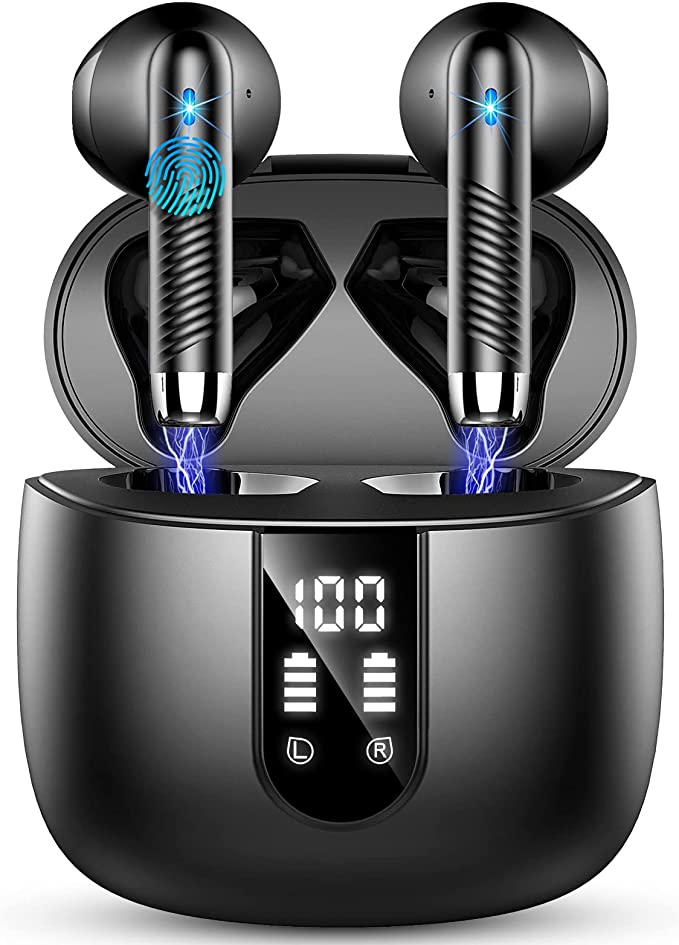The Unheard Battle: How Your Living Room Became the Final Frontier for Perfect Sound
Update on Sept. 5, 2025, 8:37 a.m.
We spend thousands on speakers and screens, but the greatest distortion in our home theater is the room itself. Using a modern AV receiver as our guide, let’s explore the invisible war being waged against physics for the sake of audio purity.
There’s a uniquely modern form of heartbreak that many of us have felt. It happens after weeks of research and a significant financial outlay. You unbox gleaming new speakers, wire them with meticulous care to a powerful-looking black box, and settle in to experience your favorite film in a way you’ve only dreamed of. You press play. And the sound is… wrong.
The explosions that should be tight and visceral are a boomy, undefined mess. The dialogue, so clear in the movie theater, is now muddled and lost in the chaos. The entire soundscape feels flat, disconnected, and somehow smaller than the sum of its expensive parts. Your immediate instinct is to blame the equipment. But the true culprit isn’t in the box; it is the box. Your living room.
For decades, the quest for perfect audio reproduction has focused on perfecting components: speakers with flatter frequency responses, amplifiers with lower distortion. Yet all that precision is unleashed into the most acoustically flawed and unpredictable component in the entire chain: the space in which we listen. This is the final frontier of high-fidelity audio. And the battle to conquer it is being fought not with acoustic foam and bass traps, but with sophisticated digital intelligence housed within the modern AV receiver. To understand this revolution, we can look to a device like the Onkyo TX-RZ70—not as a product, but as a case study in applied physics and a culmination of a long, hard-won war against chaos.

The Echo of History: A Promise of Fidelity
Long before we worried about our living rooms, the battle for sonic consistency was being fought in movie theaters. In the early 1980s, director George Lucas was preparing for the premiere of Return of the Jedi. He was horrified to discover that the intricate, groundbreaking sound mix he and his team had painstakingly crafted at Skywalker Sound sounded completely different—and dramatically worse—in the commercial theaters where his audience would experience it.
This frustration led to a collaboration with an audio scientist named Tomlinson Holman. Their mission was not to create a new sound effect, but to create a standard—a benchmark of quality that would guarantee the sound heard in the theater was the same sound heard in the mixing studio. They called it THX, and its core philosophy was, and remains, fidelity.
To become THX Certified, a piece of hardware has to survive a brutal gauntlet of tests. It must prove it can reach cinematic reference levels without gasping for air, delivering massive dynamic swings from a whisper to a roar without clipping or distortion. It must have a low noise floor, ensuring that nothing is added to the original signal. THX is not a setting; it’s a promise that the equipment is a clear, uncolored window to the artist’s original intent. This philosophy, born in the cinema, is the foundational principle of any serious home theater component. It’s the starting point, ensuring the gear itself won’t get in the way. But it couldn’t solve the bigger problem.
The Invisible Enemy: Decoding the Acoustics of Your Room
Imagine dropping a pebble into a perfectly still pond. The ripples expand outwards, clean and uniform. Now, imagine dropping that same pebble into a small, square bathtub. The waves hit the walls, bounce back, and collide with new waves, creating a chaotic, messy pattern of peaks and troughs.
Your speakers are the pebble; your room is the bathtub.
Every sound wave they produce travels through the air until it hits a boundary—a wall, the ceiling, the floor, a window. It reflects. That reflected sound, arriving at your ears milliseconds after the direct sound, smears details and confuses your brain’s ability to locate sounds in space. This is a problem in the time domain.
Simultaneously, at low frequencies, the long, powerful bass waves can perfectly fit between two parallel walls. They create standing waves, or room modes, which are fixed points of immense acoustic pressure (a boomy spot) and almost no pressure (a dead spot, or null). This is why the bass can sound overwhelming on your couch, but almost disappear if you move a few feet to the side. This is a problem in the frequency domain.
For decades, our only tool against this was crude equalization—turning down the frequencies that seemed too loud. This is like trying to fix a blurry photograph by just adjusting the brightness. You haven’t addressed the fundamental problem of focus. To truly fix the sound, you need to correct not just the tonal balance, but the timing and clarity issues as well. You have to fix the blur.

The Digital Ghost in the Machine: The Advent of Dirac Live
This is where the modern AV receiver transforms from an amplifier into an acoustic scientist. The most powerful tool in its arsenal is a technology called Dirac Live. It represents a quantum leap in digital signal processing, a shift from simple EQ to a holistic correction of the room’s entire acoustic signature.
The process is deceptively simple in concept, but fiendishly complex in execution. A calibrated microphone is placed in your listening position. The receiver sends a series of test sweeps through each speaker. The microphone listens, not just for which frequencies are too loud or soft, but for how the room mangles the signal in time. It measures the system’s impulse response—a complete acoustic fingerprint that captures all the reflections and time-domain errors.
This is where the magic happens. Using staggering amounts of computational power, the DSP chip inside the receiver analyzes this fingerprint and creates a sophisticated inverse filter. It’s a digital counter-argument to every single flaw in your room’s acoustics. If a reflection from the side wall is causing dialogue to sound smeared, the filter predicts and cancels it. If a standing wave is creating a 60Hz boom, the filter surgically reduces it without affecting the surrounding frequencies.
It is, quite literally, fixing the photograph’s focus. The result is a stunning restoration of clarity. Bass becomes tight, articulate, and even across the entire listening area. The soundstage snaps into sharp focus, with instruments and effects placed in a stable, three-dimensional space. It is the single greatest advancement in residential audio in a generation, and it’s made possible by the immense processing power of devices like the TX-RZ70.
The Third Dimension: Beyond Channels to Sound Objects
While Dirac tames the room, another revolution was changing the content we play within it. For years, we’ve been adding channels: from stereo (2.0), to surround (5.1), to more complex setups (7.1). But this was always a channel-based system. A sound, like a helicopter, was manually “panned” by a sound mixer to move from the front-left speaker to the rear-right speaker. It was an illusion.
Dolby Atmos and DTS:X changed the paradigm entirely. Instead of mixing to a fixed number of channels, sound mixers now work with “sound objects.” That helicopter is now a digital object with metadata describing its precise location in a three-dimensional space and its trajectory.
This is a fundamental shift. Think of it like this: channel-based audio is a fixed train on a predetermined track. Object-based audio is a car with a GPS that can be guided anywhere on the map in real-time.
The AV receiver’s job is now to act as a powerful rendering engine. When it receives the Atmos data stream, it looks at your specific speaker layout—whether you have two, four, or six height speakers—and uses the 11 available channels of amplification in the TX-RZ70 to render that helicopter’s flight path in real-time, perfectly optimized for your unique setup. This is why having more channels isn’t just about being louder; it’s about creating more rendering points for a more seamless and convincing 3D sound field.
The Foundation of Power: Why 140 Watts Matters (But Not for the Reason You Think)
Of course, all this digital wizardry would be meaningless without a clean, powerful foundation. The receiver is rated at 140 watts per channel, but this number is widely misunderstood. Its importance is not about achieving deafening volume levels; it’s about providing dynamic headroom.
In a film’s soundtrack, the difference between the quietest whisper and the loudest explosion can be enormous. These sudden, massive peaks are called transients. An underpowered amplifier, when faced with a sudden transient, will run out of clean power. It will “clip” the top of the waveform, turning a clean peak into a harsh, distorted square wave. This is not only unpleasant to listen to; it can damage your speakers.
A robust power supply and capable amplification stage, likely a refined Class A/B design in this case, ensures there is always a deep reservoir of clean power on tap. It allows the receiver to reproduce those instantaneous peaks with effortless speed and clarity, preserving the full dynamic impact of the soundtrack without distortion. This is the muscle behind the brain.
The Conductor of a Silent Orchestra
The journey to perfect sound in our homes has been a long one, moving from the quest for better components to the far more complex challenge of taming the environment itself. The modern AV receiver sits at the nexus of this evolution.
It is a historian, upholding standards of fidelity that were born in the golden age of cinema. It is a physicist, firing sound waves into a room and analyzing their complex behavior in time and space. It is a computer scientist, running billions of calculations per second to build a digital inverse of your room’s flaws. And it is, finally, a powerful engine, conducting the entire orchestra of speakers with precision and authority.
The unheard battle against the physics of our own homes is a quiet one, waged in milliseconds and measured in decibels. And today, thanks to the staggering intelligence packed into the unassuming black box at the heart of our systems, it’s a battle that we can finally win.



























































